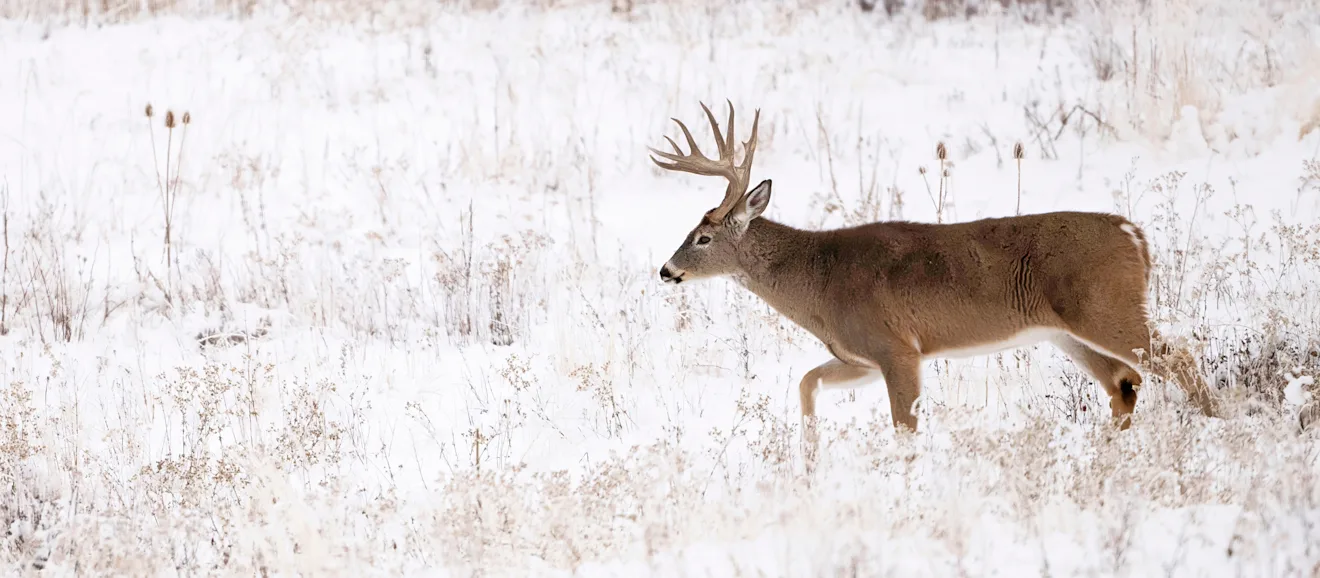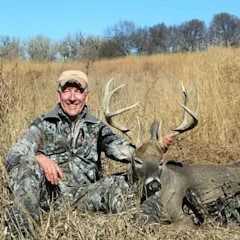The rut gets all the attention when it comes to big bucks hitting the dirt, but let’s be honest; during the frenzy of the breeding season, with deer running willy nilly through the woods, a lot of that giant-slaying involves a healthy dose of luck, a matter of the cosmic tumblers clicking just right for a handful of happy hunters. Nothing wrong with that. But when it comes to intentionally targeting and tagging a wallhanger you know about, the pre-rut and post-rut periods are tops.
We are firmly on the backside of rutting action in most areas as I write this, and with the Main Event winding down, some hunters are probably losing heart, maybe even thinking about calling it quits. Well, hang in there. You may not see as many bucks during the post-rut, but your odds of catching up with a slammer are still really good. So, roll up your sleeves and follow these 10 tips for tagging the best buck in the neighborhood after the rut.
1. Refocus on Food
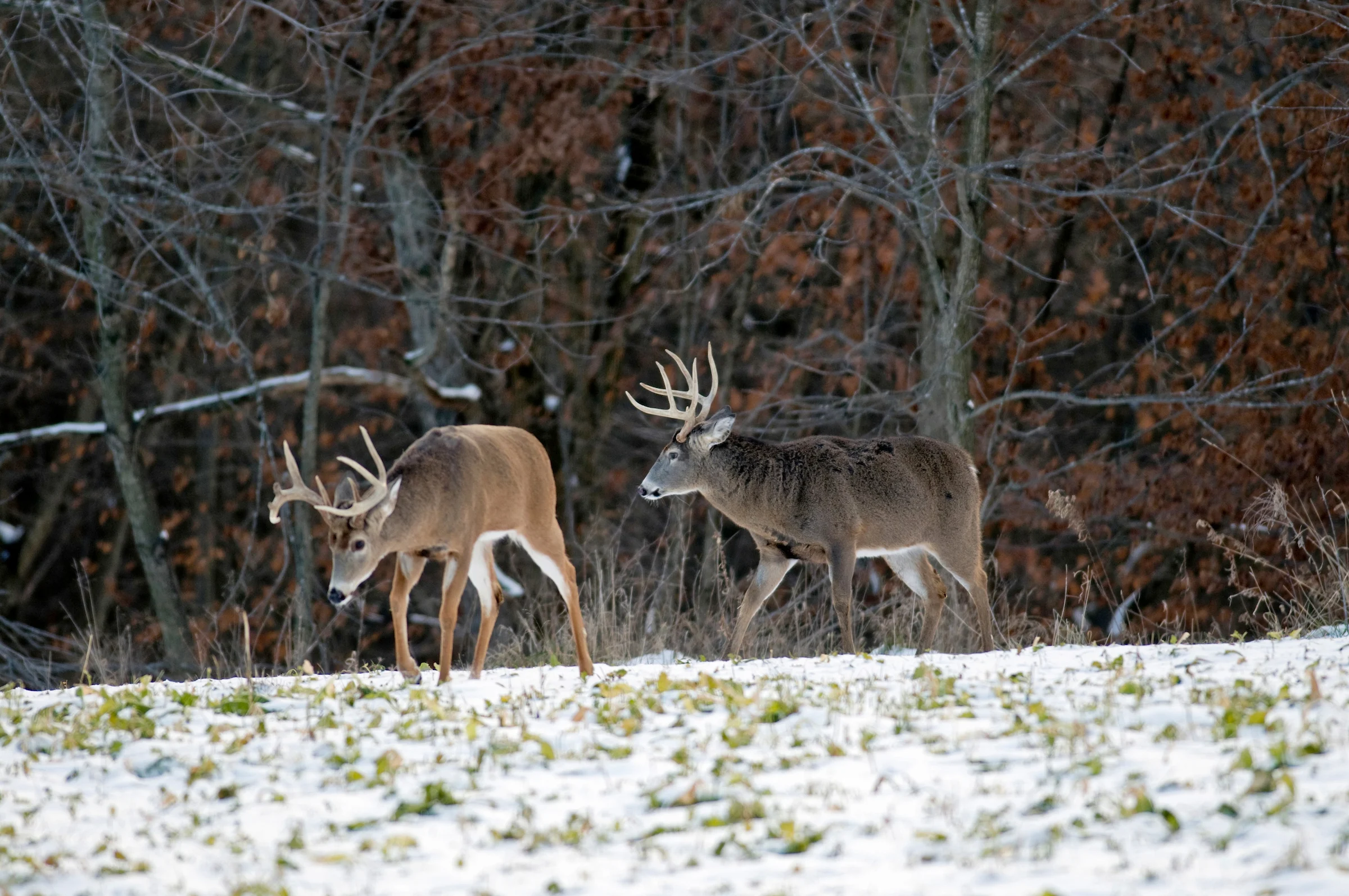
For bucks, food takes a back seat to the need to breed all through the heart of the rut. But that is starting to change now. Cooling temps, a growing scarcity of food sources, and exhaustion from the rut has all deer hungry during the post-rut, but this is especially true big-running bucks. If you don’t need a kill a great big buck to be happy, now is an excellent time to catch a young buck putting on the feed bag in an effort to restore calories burned while chasing does. Older bucks will continue trolling for does well into the post-rut, as they still have the energy and drive for breeding. But here's the thing: One of the first places they're going to look for late-cycling does now is at the best food sources. So, these are prime spots for you to focus on, too.
Related: 10 Best Late Season Deer Foods
2. Revisit Rublines
It’s tempting to write off rubs as yesterday’s news, but pre-rut rublines can become important again as breeding activity drops off. Mature bucks will often start freshening the rubs they made a month ago, especially those made in terrain funnels that influence deer movement. Remember, some rubs are kind of reflexive; a way to work off steam as bucks impatiently wait for does to get ready to breed. These rubs are rarely revisited. But the rubs that a buck makes as he follows terrain features to cover ground can become hugely important now. Spend a midday or two going back and checking those rub lines you found in the pre-rut to see if they’ve been freshened. If they have, you’ve suddenly uncovered one or more of the preferred travel routes a good post-rut buck.
3. Film a Scrape
It’s equally tempting to dismiss scrapes now, but that's a huge mistake. Never forget that scrapes are used by whitetails virtually every month of the year, including the weeks encompassing the post-rut. I run a lot of cameras on scrapes—both real and mock—and I keep them rolling on the scrapes that appear the most active, as these primary scrapes will get revisited by both bucks and does now. I like to run my cams in video mode now, as I can learn a lot more about a buck’s demeanor, as well as his approach to and exit from the scrape, with a 20-second video clip and a couple still shots. If a post-rut buck is daylighting on a scrape, I'll jump right on that. But even when they aren't, seeing when and how often bucks hit a scrape now will help you formulate a successful hunt plan.
4. Deploy More Trail Cameras
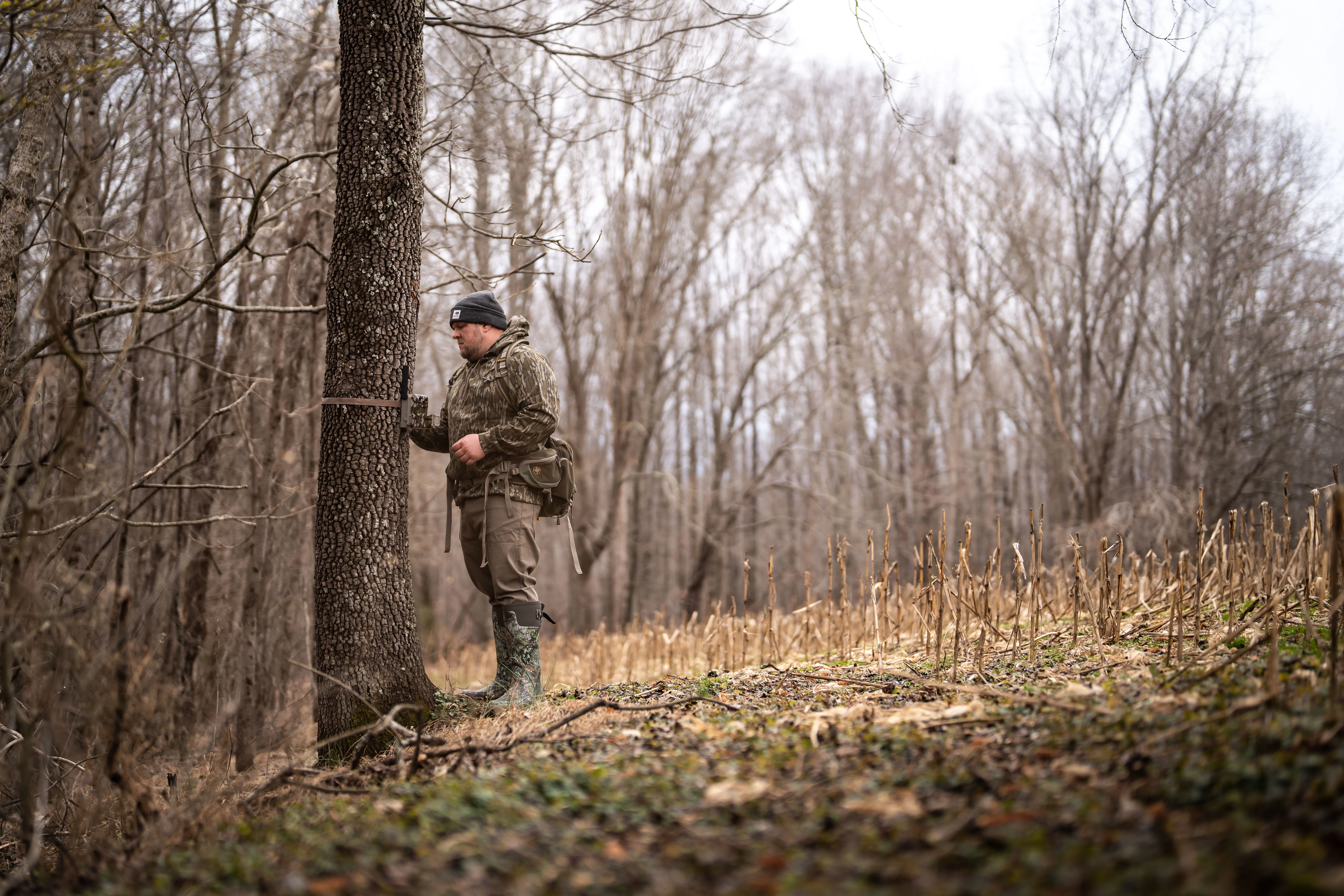
Scouting is always important, but because things are changing fast, the post-rut is a critical time to gather intel before hunting. I always have several cameras out working for me, but I try to get every one I have in the field right now. I place wireless cams in sensitive spots that I don’t want to intrude, or on farms that are distant from my home and harder to check. On food plots or ag fields, I’ll typically put cameras on time-lapse or “field scan” mode, and tweak the settings for daylight hours. This allows the camera to take images of distant trails and feeding spots and not rely on an animal stepping close enough to trigger it. And that allows me to decide when and where deer are entering a food source and, consequently, where to hang a stand or construct a blind.
Related: Best Cellular Trail Cameras of 2024, Tested and Reviewed
5. Take an Observation Stand
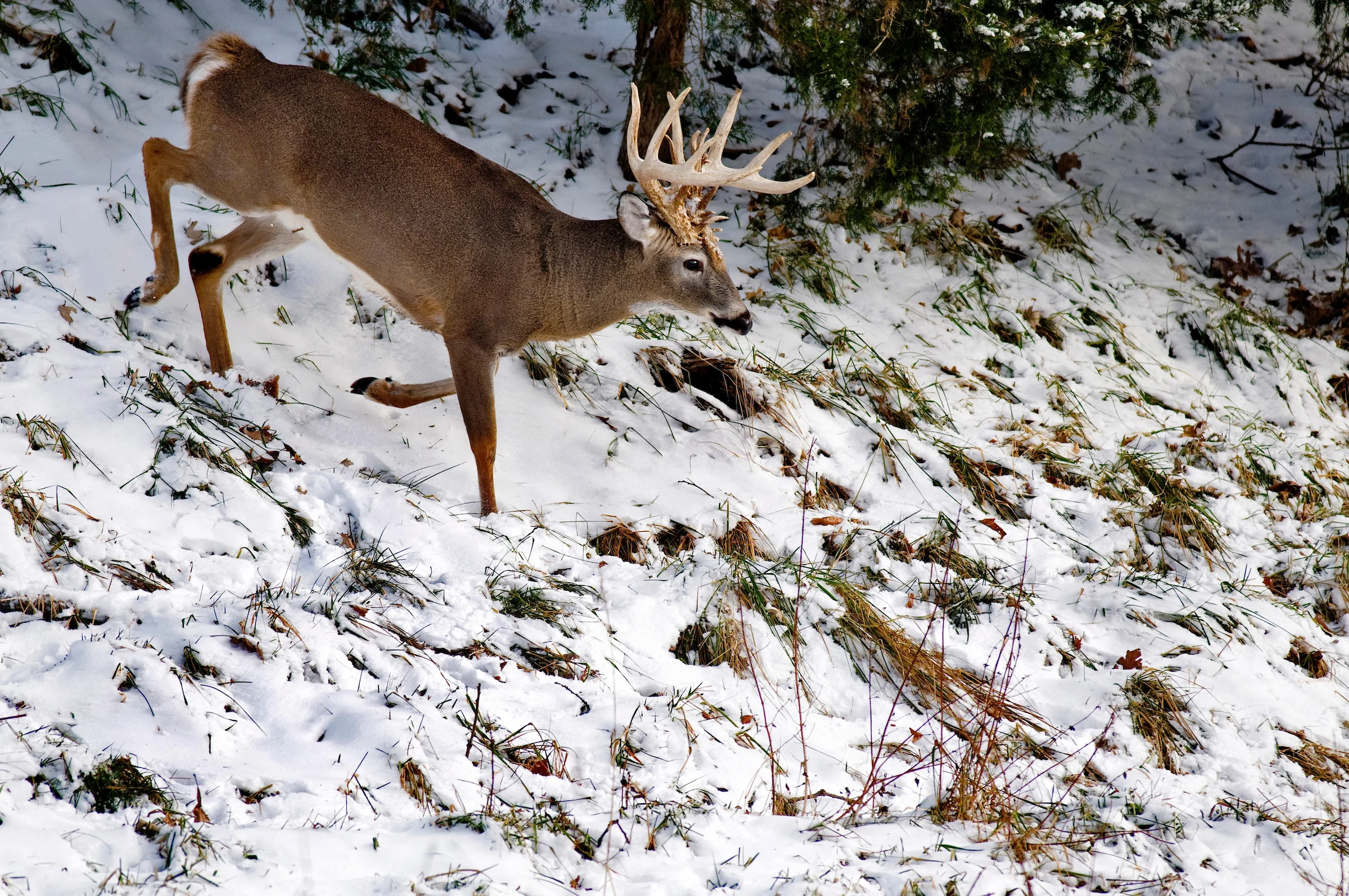
For much of the fall, I don’t care that much whether I can see a lot of real estate when I hang a stand. Usually I’ve hung the set based on one or two big deer that move through the landscape in a very particular way, and I am focused specific spots where I feel they’re most vulnerable. That can change now—especially for morning hunts—when I'll often hang a stand that allows me to observe several macro-funnels (fencelines, creek bottoms, fingers of timber, ditches) that connect larger pieces of cover and neighboring properties. Why? Because covering a lot of ground with your eyes (and a binocular) lets you spot cruising post-rut buck and try to lure they into range with calls, rattling, a decoy, or all three. Remember, the biggest bucks are still searching for late-cycling does, and this is a great way to target those old studs specifically.
6. Rattle-N-Run
By this time in the season, most of us have already burned many long hours in a stands or blind. If you're tired of sitting and waiting, now is the perfect time for a more aggressive approach. My friend Ron Gehrke, one of the better whitetail hunters I know, likes to hunt mature bucks like turkeys now (he’s an expert gobbler killer too). He makes a midday milk run of different spots that involves slipping into a vantage point, rattling and calling for 15-20 minutes, and then trying the same routine at another spot. This method is designed to pull an aggressive buck in for a shot when he responds to the horns. If no action ensues, Ron assumes that either no buck is in earshot, or any buck that is isn't in the mood for a fight. While the technique is certainly aggressive, it’s also low-impact; if no buck responds to the horns, Ron quietly pulls out and tries another spot. And it’s important to note that this technique can be repeated on another day when a buck that wasn’t present before suddenly appears, or one that heard the horns the first time might be in a different mood on a revisit.
7. Roost a Buck
We’re back to that time of year when morning hunts—especially near food sources—need to be handled with care. Deer are tired, not only from rutting, but from fleeing human pressure during gun seasons. Consequently, they can return to that early-to-bed routine that marked pre-rut behavior, and unless you’ve got a bullet-proof entry (and are willing to get in the stand way early), trying to intercept them on a morning hunt can be tricky. This makes an afternoon ambush the best approach, but predicting where a buck is going to enter a food source can be equally tough.
This is when it can pay to "roost" a buck, which involves glassing a food source from afar at dawn then noting where any shooter bucks exit the food and head to bed. If you can glean such info, you’ve got a solid shot at catching the buck entering the food source at the same spot that afternoon. In areas where you can't glass a food source from a distance, sneak into the food midday and hang a wireless cam (or several) that covers the main exit trails. If you capture a pic of your target buck slipping back to bed, setting up in that same area for the afternoon hunt should produce.
8. Check Your Trail-Cam History
It can really pay off to keep a record of where and when your trail cameras got pics of great bucks from year to year, because deer can be quite predictable about showing up in the same spots in the same time frame from season to season. This is especially useful during the post-rut, when there’s always a shake-up in where a buck is going to settle in after the main breeding season is over. By examining last fall’s post-rut pics and videos, it’s possible to come up with a solid game plan that predicts where bucks are going to show up before they even get there. Naturally things can change from year to year, depending on varying food sources and land-use shifts, and of course an individual buck you were chasing last fall might be hanging on someone’s wall this season. Still, I’ve seen amazing similarities in the preferred areas of mature bucks from year to year; if one big deer liked a spot, chances are another will adopt the area for similar reasons.
9. Still-Hunt a Bedding Area
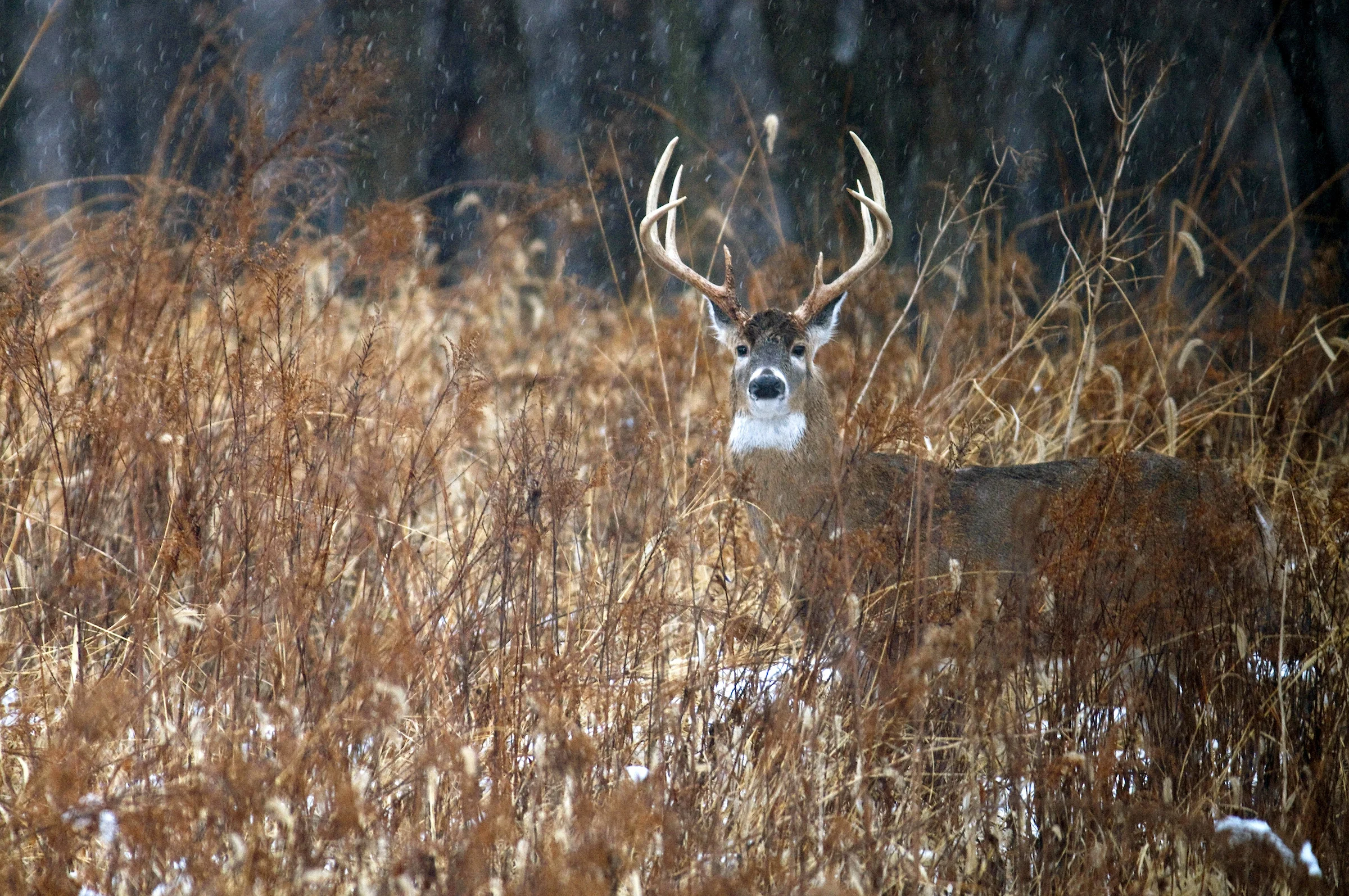
As noted in Tip #7, stand/blind burnout and boredom is real, especially after weeks of patiently waiting for a nice buck that never made a mistake. And the popularity of stationary hunting has become so endemic that it’s easy to forget that thousands and thousands of bucks have been killed over the decades (and centuries and millennia) by guys whose feet never left the ground. So follow their lead, and instead of whiling away hours in a stand one morning, still-hunt the known bedding area(s) of area bucks. It’s shockingly simple and eminently enjoyable to just put the wind in your face (or against one cheek) and take three or four carefully chosen steps, stop to scan, and repeat the process. You’ll find your eyes and ears riveted to every movement and sound as you search the cover ahead for a glimpse of a twitching ear, the curve of an antler, or the eye of a deer staring back at you. Connect with a buck of any size in this manner, and you’ll feel as good as you would with a trophy-class buck from a stand. Oh, and this technique is especially effective now, as rut-weary bucks simply spend more time on their bellies.
10. Track a Buck
And speaking of hunting from your feet, the post-rut is the absolute best time of the season to follow a buck track to its maker—provided you have snow and a big enough tract of land that you can stay on a track all day if necessary. It's not impossible to track down a deer during the rut, but as a general rule, big-woods bucks are traveling so big during the breeding season that catching up to one by following its hoof prints is a low-odds affair. But once the post-rut hits, most bucks transition to a recovery phase and cover far less ground. Yes, some may still be trolling for does, but not as widely. The bottom line: Cut a fresh track in the snow now, and your odds of catching up to that buck skyrocket. So go get him.
Related: How to Track Deer in the Snow

